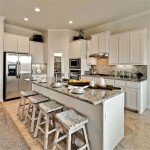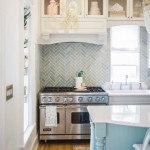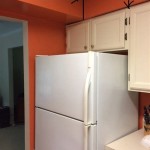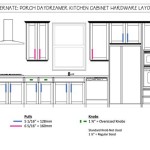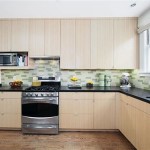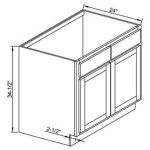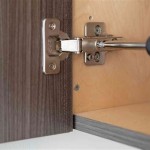Understanding Kitchen Cabinet Corner Unit Hinges
Kitchen cabinet corner units present a unique design challenge. The awkward angles and limited accessibility demand specialized hardware, particularly hinges, to ensure smooth operation and efficient use of space. Selecting the correct hinge type is crucial for the functionality, longevity, and overall user experience of a corner cabinet. This article provides a detailed examination of the various types of kitchen cabinet corner unit hinges, their functionalities, and factors to consider when choosing the most appropriate option.
Corner cabinets are often categorized by their design, including blind corner cabinets, lazy Susan cabinets, and L-shaped corner cabinets. Each design necessitates specific hinge requirements. Blind corner cabinets typically feature doors that fold or slide in, requiring complex hinge mechanisms. Lazy Susan cabinets, with their rotating shelves, often utilize specialized hinges that allow for greater door swing. L-shaped corner cabinets may use standard hinges, but often require wider opening angles to avoid obstruction.
The primary function of a corner cabinet hinge is to provide a reliable pivot point for the door, allowing it to open and close smoothly. However, corner cabinet hinges often have to accommodate unusual angles and potential obstructions. The hinge must also be robust enough to support the weight of the door and withstand repeated use. Furthermore, the aesthetic appeal of the hinge should complement the overall design of the kitchen.
Types of Hinges for Corner Cabinets
Several types of hinges are commonly used in kitchen cabinet corner units, each offering different functionalities and advantages. Understanding the characteristics of each type is essential for making an informed decision.
Piano Hinges (Continuous Hinges): Piano hinges, also known as continuous hinges, run the entire length of the cabinet door. They provide exceptional support and stability, making them suitable for heavier doors or situations where weight distribution is a concern. While not exclusively designed for corner units, they can be adapted for specific corner cabinet applications, particularly those requiring a robust and durable hinge solution. Their continuous design minimizes stress points, contributing to the longevity of the cabinet door.
Butt Hinges: Butt hinges are a standard type of hinge consisting of two rectangular leaves joined by a pin. While simple in design, butt hinges can be used in corner cabinets, particularly in face-frame cabinets, where the hinges are mounted directly onto the cabinet frame and door. The leaf thickness, pin diameter, and material composition of butt hinges vary, allowing for customization based on the door's weight and frequency of operation. For corner cabinets, selecting butt hinges with a wider opening angle is often necessary to prevent the door from colliding with adjacent cabinets or walls.
Overlay Hinges: Overlay hinges are designed for frameless cabinets, where the cabinet door completely covers the cabinet frame. Partial overlay hinges are also available, where the door partially covers the frame. These hinges are typically concealed, providing a clean and modern aesthetic. Overlay hinges for corner cabinets often incorporate specialized mechanisms that allow for wider opening angles and smoother door movement, accommodating the constraints of the corner space. They typically are more complex in their adjustment mechanism which allow for fine tuning of gaps and alignment.
Inset Hinges: Inset hinges are used when the cabinet door is flush with the cabinet frame. The hinge is mortised into both the door and the frame, creating a seamless appearance. Inset hinges for corner cabinets require precise installation and adjustment to ensure proper alignment and smooth operation. Due to the complexity of installation and the need for precise measurements, inset hinges are less commonly used in corner cabinet applications compared to overlay hinges.
Pivot Hinges: Pivot hinges operate by rotating around a pivot point, typically located at the top and bottom of the door. They are often used for frameless cabinets and offer a clean, minimalist look. Pivot hinges for corner cabinets can be configured to allow the door to swing outwards or inwards, depending on the specific requirements of the cabinet design. The weight capacity of pivot hinges must be carefully considered, especially for larger or heavier doors.
Bi-Fold Hinges: Bi-fold hinges are specifically designed for doors that fold in half when opened. These hinges are commonly used in blind corner cabinets, where the door needs to be moved out of the way to access the contents of the cabinet. Bi-fold hinges typically consist of two hinges connected by a pivot point, allowing the door to fold neatly against itself. The quality of bi-fold hinges is crucial for smooth operation and preventing the door from sagging or binding.
Lazy Susan Hinges: Lazy Susan hinges are used for cabinets with rotating shelves. These hinges need to accommodate the movement of the rotating shelf while also allowing the door to open and close independently. Lazy Susan hinges are often designed with a wider opening angle to provide easy access to the contents of the cabinet. The durable construction of lazy susan hinges is paramount due to the cyclical nature of the movement of the door and shelving.
Factors to Consider When Choosing Corner Cabinet Hinges
Selecting the appropriate hinge for a kitchen cabinet corner unit requires careful consideration of several factors, including the cabinet design, door weight, opening angle, and desired aesthetic.
Cabinet Construction: The construction of the cabinet, whether face-frame or frameless, dictates the type of hinge that can be used. Face-frame cabinets typically accommodate butt hinges or wrap-around hinges, while frameless cabinets are more suited for overlay or inset hinges. The cabinet material, such as solid wood, plywood, or particleboard, also influences the choice of hinge, as different materials have varying screw-holding capabilities.
Door Weight and Size: The weight and size of the cabinet door are critical factors in hinge selection. Heavier doors require stronger hinges with a higher weight capacity. Larger doors may also require multiple hinges to distribute the weight evenly and prevent sagging. Exceeding the weight capacity of a hinge can lead to premature failure and damage to the cabinet.
Opening Angle: The desired opening angle of the cabinet door is another important consideration. Corner cabinets often require wider opening angles to provide easy access to the contents of the cabinet and prevent the door from colliding with adjacent cabinets or walls. Specialized hinges with wider opening angles are available to accommodate these requirements. Standard hinges typically offer a 90-degree opening angle, while specialized hinges can provide 110-degree, 165-degree, or even 180-degree opening angles.
Aesthetic Considerations: The aesthetic appearance of the hinge should complement the overall design of the kitchen. Concealed hinges provide a clean and modern look, while exposed hinges can add a decorative touch. The finish of the hinge, such as brushed nickel, chrome, or antique brass, should also be considered to match the other hardware in the kitchen.
Durability and Quality: The durability and quality of the hinge are essential for ensuring long-term performance. High-quality hinges are typically made from durable materials such as stainless steel or solid brass and feature smooth, reliable mechanisms. Investing in high-quality hinges can prevent the need for frequent replacements and repairs.
Ease of Installation and Adjustment: The ease of installation and adjustment of the hinge is another important factor to consider. Some hinges are easier to install and adjust than others, particularly for DIY projects. Hinges with adjustable features allow for fine-tuning the alignment of the door and ensuring smooth operation. Self-closing hinges are also available, which automatically close the door when it is released, adding convenience and preventing the door from being left ajar.
Installation and Maintenance of Corner Cabinet Hinges
Proper installation and regular maintenance are crucial for ensuring the longevity and optimal performance of corner cabinet hinges. Incorrect installation can lead to misalignment, binding, and premature wear. Regular maintenance, such as lubricating the hinge mechanisms and tightening loose screws, can prevent problems and extend the life of the hinges.
The installation process typically involves mortising the hinge into the cabinet door and frame (for inset hinges), or attaching the hinge to the surface of the door and frame (for overlay hinges). Accurate measurements and careful alignment are essential for proper installation. Using a hinge jig can help ensure precise mortising and accurate placement of the screws. It is recommended to pilot drill the screw holes to prevent splitting the wood and ensure a secure attachment.
Once the hinges are installed, it is important to adjust them properly. Adjustable hinges allow for fine-tuning the alignment of the door and ensuring smooth operation. The adjustment mechanisms typically involve adjusting screws that control the vertical, horizontal, and depth alignment of the door. Small adjustments can make a significant difference in the performance of the hinges.
Regular maintenance of corner cabinet hinges involves lubricating the hinge mechanisms with a silicone-based lubricant or light oil. This helps to reduce friction and prevent squeaking. It is also important to inspect the hinges regularly for loose screws and tighten them as needed. Loose screws can cause the hinge to shift, leading to misalignment and binding. Over time, the hinges may require replacement, especially if they are showing signs of wear or damage.
In conclusion, selecting the appropriate kitchen cabinet corner unit hinges requires a thorough understanding of the different types of hinges available, their functionalities, and the factors that influence their performance. Careful consideration of the cabinet design, door weight, opening angle, aesthetic considerations, and durability is essential for making an informed decision. Proper installation and regular maintenance are crucial for ensuring the longevity and optimal performance of the hinges, contributing to the overall functionality and user experience of the kitchen cabinet corner unit.

Kitchen Cabinet Corner Door Hinges Doors Replacement

Probrico 135 165 Kitchen Cabinet Hinge Corner Folded Cupboard

Corner Hinges For L Shaped Cabinets Rincomatic

Corner Hinges For L Shaped Cabinets Rincomatic

150 Pie Cut Corner Hinge Kitchen Cabinet

79t9550 Blum Blind Corner Hinge 3 Dimensional Front Adjustment 95 Degree Opening

Corner Hinges Rmghardware

6 Of The Best Solutions For Kitchen Corner Units Fitzgerald Kitchens
Installing Pie Cut Hinged Doors For Lazy Susan Corner Cabinet Momplex Vanilla Kitchen Ana White

Tambee Corner Cabinet Hinge Lazy Susan Hinges For Cabinets 135 Degree
Related Posts

